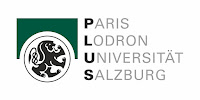Aigner K. 2022. Ecology of marbled crayfish and possible management measures at fishing ponds in Salzburg. Master’s thesis, Department of Environment and Biodiversity, University of Salzburg.
https://resolver.obvsg.at/urn:nbn:at:at-ubs:1-36654Abstract
Exotic crayfish species are threatening native freshwater ecosystems as well as native crayfish species by affecting all trophic levels of a system, competition and being a vector of the crayfish plague pathogen. The highly invasive marbled crayfish (Procambarus virginalis) is very successful in establishing populations in the wild, due to its parthenogenetic form of reproduction. Three established populations were found at fishing ponds in Salzburg and investigated over a period of ten weeks to shed light on habitat requirements or preferences of this species as well as evaluating and comparing methods for detection and catch. Water temperature and dissolved oxygen concentration, as well as time of the year and macrophyte cover were the main factors affecting the density of active marbled crayfish in this study. Additionally, the obtained data from observations suggests a preference of marbled crayfish for structure-rich habitats providing shelters as well as food sources. Traditional crayfish traps were the most size-selective catching method, followed by fine-meshed fish traps. Hand-catch with landing nets showed no size-selectivity. In almost all samples the eDNA analyses indicated no presence of marbled crayfish, despite numerous observations at night. The false negative results of this method were likely due to insufficient filtering volumes and a low number of sub-samples. qPCR analyses of twenty individuals showed no sign of infection with the crayfish plague pathogen (Aphanomyces astaci), hinting that the population might not have encountered this pathogen yet. The results of this study provide a first insight into the ideal habitats for marbled crayfish. However, this species is known for its high ecological plasticity, which is why further investigations are strongly recommended. Additionally, management measures to supress (sic) population growth in order to avoid a spread to other freshwater systems in close proximity should be continuously undertaken as well as monitoring regarding the infection status with the crayfish plague pathogen.
Keywords: Marbled crayfish • Procambarus virginalis • Austria • habitat preferences • population characteristics • management measures • eDNA • crayfish plague • invasive species




